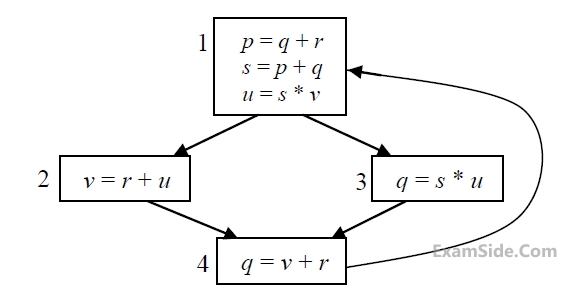Consider the following ANSI C code segment:
z = x + 3 + y -> f1 + y -> f2;
for (i = 0; i < 200; i = i + 2){
if (z > i) {
P = p + x + 3;
q = q + y -> f2;
} else {
p = p + y -> f2;
q = q + x + 3;
}
}
Assume that the variable y points to a struct (allocated on the heap) containing two fields f1 and f2, and the local variables x, y, z, p, g, and i are allotted registers. Common sub-expression elimination (CSE) optimization is applied on the code. The number of addition and dereference operations (of the form y -> f1 or y -> f2 ) in the optimized code, respectively, are:
For a statement S in a program, in the context of liveness analysis, the following sets are defined:
USE(S): the set of variables used in S
IN(S): the set of variables that are live at the entry of S
OUT(S): the set of variables that are live at the exit of S
Consider a basic block that consists of two statements, S1 followed by S2.
Which one of the following statements is correct?
i. There exists a statement $${S_j}$$ that uses x
ii. There is a path from $${S_i}$$ to $${S_j}$$ in the flow graph corresponding to the program
iii. The path has no intervening assignment to x including at $${S_i}$$ and $${S_j}$$

The variables which are live both at the statement in basic block 2 and at the statement in basic block 3 of the above control flow graph are